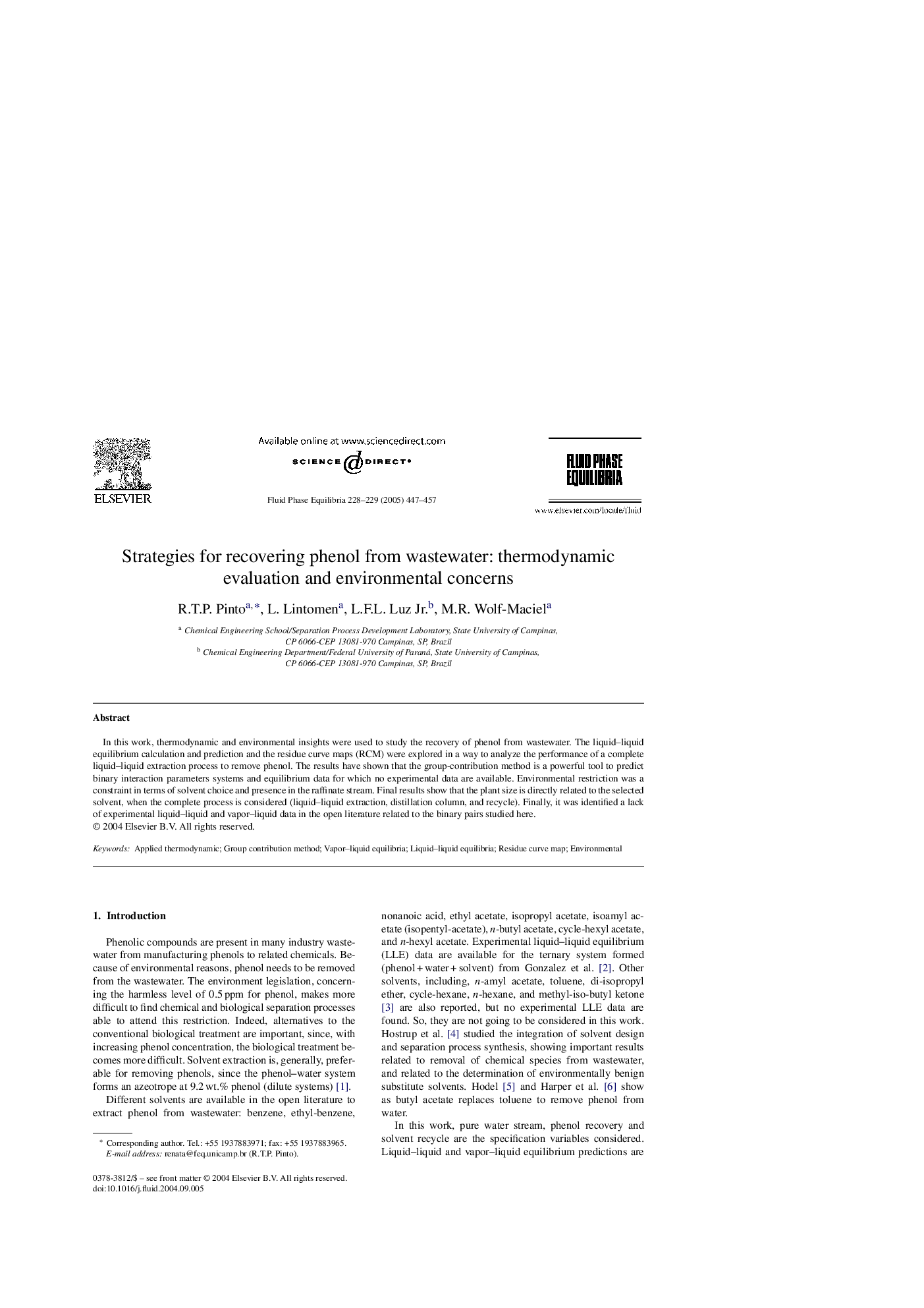| Article ID | Journal | Published Year | Pages | File Type |
|---|---|---|---|---|
| 9626088 | Fluid Phase Equilibria | 2005 | 11 Pages |
Abstract
In this work, thermodynamic and environmental insights were used to study the recovery of phenol from wastewater. The liquid-liquid equilibrium calculation and prediction and the residue curve maps (RCM) were explored in a way to analyze the performance of a complete liquid-liquid extraction process to remove phenol. The results have shown that the group-contribution method is a powerful tool to predict binary interaction parameters systems and equilibrium data for which no experimental data are available. Environmental restriction was a constraint in terms of solvent choice and presence in the raffinate stream. Final results show that the plant size is directly related to the selected solvent, when the complete process is considered (liquid-liquid extraction, distillation column, and recycle). Finally, it was identified a lack of experimental liquid-liquid and vapor-liquid data in the open literature related to the binary pairs studied here.
Keywords
Related Topics
Physical Sciences and Engineering
Chemical Engineering
Chemical Engineering (General)
Authors
R.T.P. Pinto, L. Lintomen, L.F.L. Jr., M.R. Wolf-Maciel,
